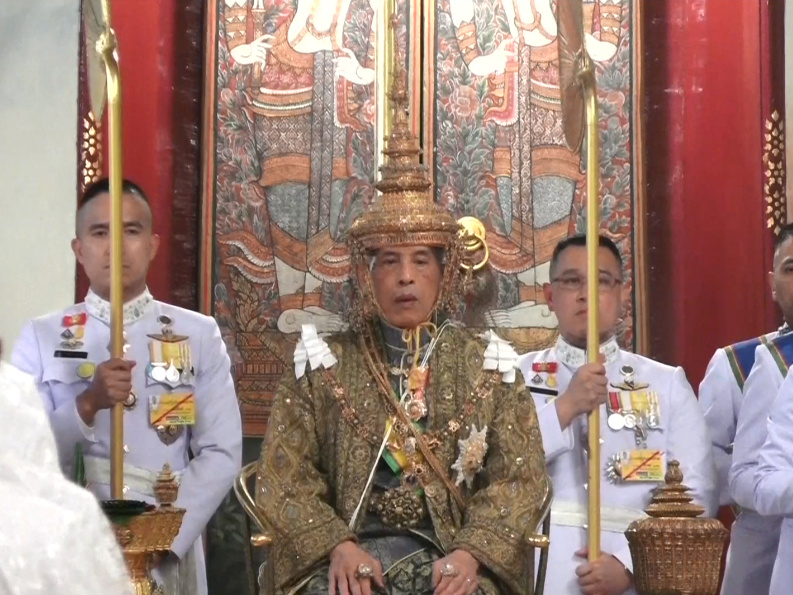- The coronation of Thailand’s King Maha Vajiralongkorn took place on Saturday, the country’s first coronation in seven decades.
- The ceremony was extremely lavish, with King Vajiralongkorn donning a gold-enameled, diamond-tipped crown weighing 16lb.
- The crown’s weight symbolises the king’s royal burden.
- Visit INSIDER’s homepage for more stories.
Thailand’s King Maha Vajiralongkorn on Saturday completed intricate Buddhist and Brahmin rituals to symbolically transform him into a living god as the Southeast Asian nation officially crowned its first monarch in nearly seven decades.
King Vajiralongkorn, 66, became constitutional monarch after the death of his revered father, King Bhumibol Adulyadej, in October 2016 after 70 years on the throne.
The king was joined by new Queen Suthida after a surprise announcement three days before the coronation that the thrice-divorced monarch had married for a fourth time.
A heavy crown
The high-reaching crown, which weighs 7.3 kg (16 lb) symbolizes the summit of Mount Meru, the Hindu god Indra's heavenly abode, and its weight represents the monarch's royal burden.
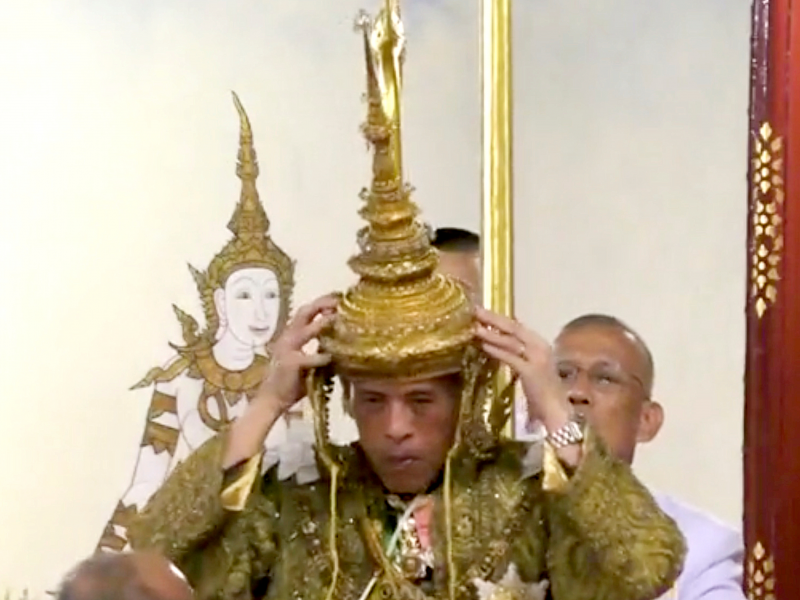
King Vajiralongkorn put the crown on his head himself with the help of court officials, and adjusted it several times during the ceremony.
His first royal command was to reign in "righteousness"
King Vajiralongkorn sat erect on a high throne above his queen, royal family members and Brahmin priests inside the Grand Palace throne hall where the royal guardian deity Phra Siam Devadhiraj is said to reside.
"I shall reign in righteousness for the benefits of the kingdom and the people forever," the king said in his first royal command, while sitting under a nine-tiered umbrella in full royal regalia including a gold-enameled, diamond-tipped crown.
Traditionally uttered after a king is crowned, the king's first royal command serves to capture the essence of his reign. The king's royal command was similar to that of his father's 69 years ago.
King Maha Vajiralongkorn also granted Queen Suthida, a former Thai Airways flight attendant and head of his personal bodyguard regiment, her full royal title.
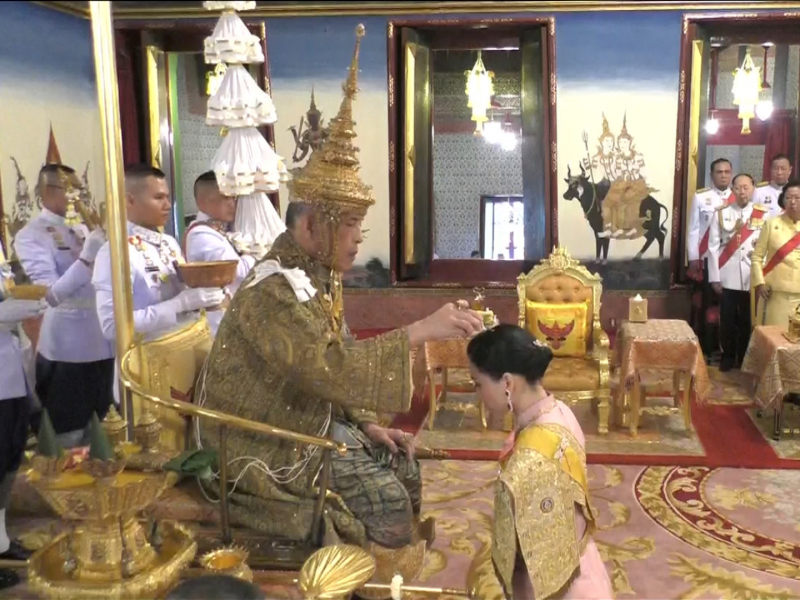
Thai kings' coronation rituals are a mixture of Buddhist and Hindu Brahmin traditions dating back centuries.
Saturday's rituals were about transforming him into a "Devaraja", or a divine embodiment of the gods.
Outside the palace walls, a sea of people in yellow polo shirts sat on roadsides, holding up portraits of the king and the Thai national flag.
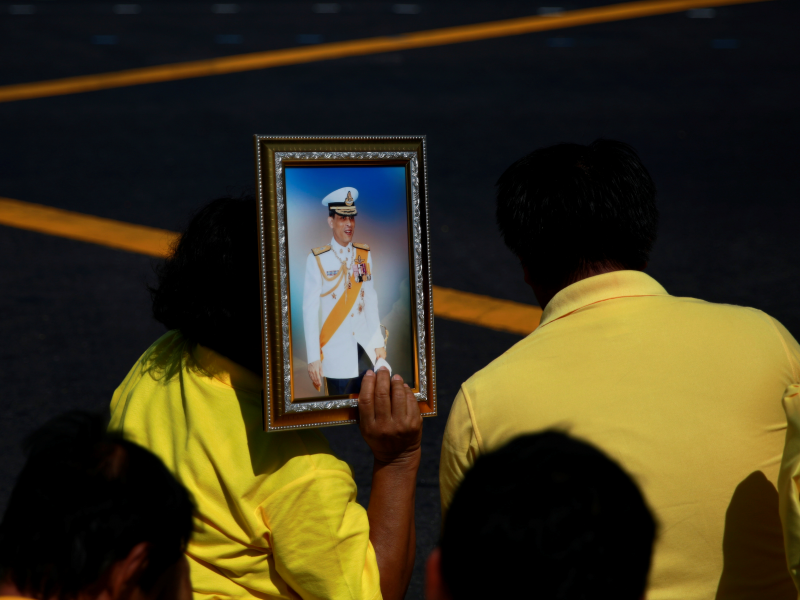
Yellow is particularly significant in Thai culture, which is steeped in astrology, as it is the color of Monday, the day the king was born, and also the color of the sun, which represents the monarch in the cosmos.
Purification ceremonies and cannons
Before the crowning ritual, King Vajiralongkorn appeared dressed in simple white robes as he underwent a royal purification ritual, sitting under a canopied fountain that poured consecrated waters over his head.
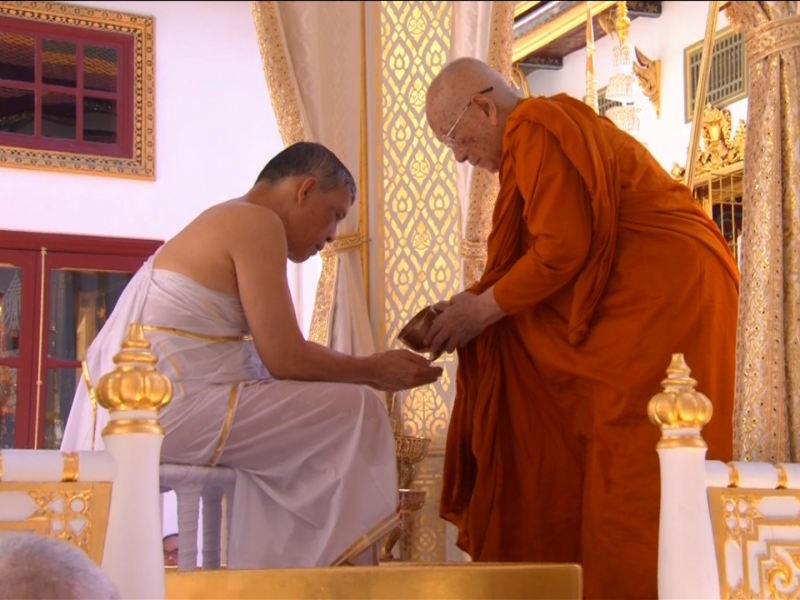
As the waters started pouring, cannons from the 19th century, used specifically for the coronation, started firing ten volleys each.
The country's Buddhist Supreme Patriarch also poured sacred waters over the king, followed by Brahmin priests and royal family members.
The king later changed into a full uniform and took a seat on an eight-sided, carved wooden throne to receive sacred waters on his hand in an anointment ritual.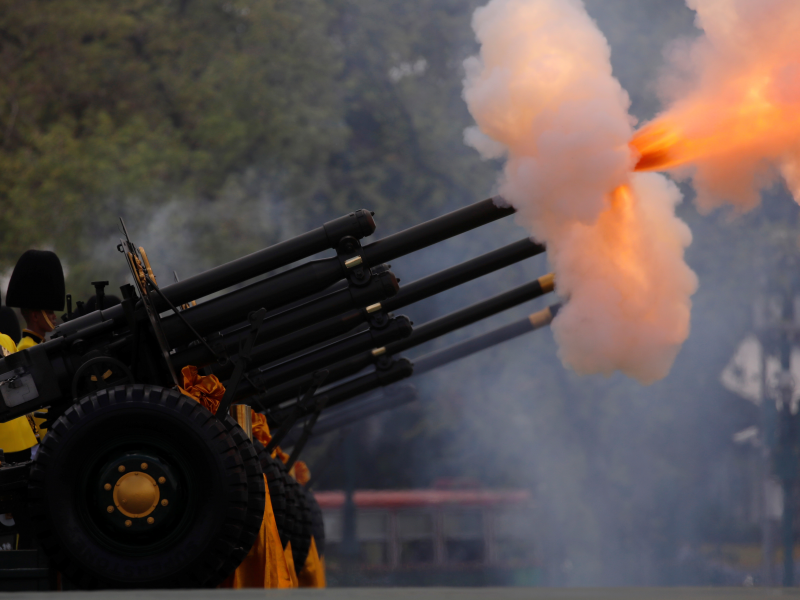
During the ceremonies, the king gave alms to saffron-robed, barefoot monks.
Later on Saturday evening, the king will proclaim himself the royal patron of Buddhism later in the evening, and perform a private housewarming ritual at the royal residence where he will stay the night, as previous kings have done.

